YouTube is selling merchandise for YouTube creators
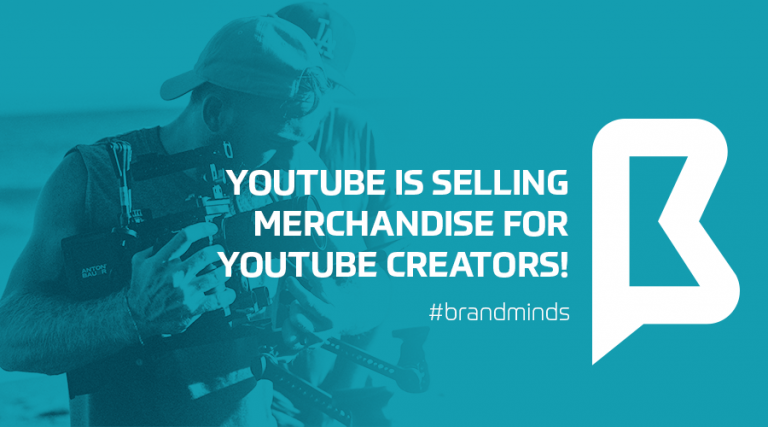
Social media platforms have become an integrated part of business sales strategies. Retailers, brands and companies can use their social media accounts to promote their products:
- Ecommerce retailers increase their orders leveraging the power of Facebook Ads with Facebook pixel;
- Instagram offers its business users a new way to shop by turning their accounts into a visual storefront with shoppable tags;
- Snapchat increases brands’ revenues with AR campaigns;
- Pinterest invites their users to sell product with buyable pins.
[bctt tweet=”YouTube is the latest social media platform to enter the shoppable media environment.” username=”brand_minds”]
The only way for vloggers to make money on YouTube was through ads. But recently YouTube announced that it will expand the ways its users make money: merchandise selling.
YouTube will allow certain creators to sell merchandise directly through YouTube’s platform. Also these creators will be able to offer $4.99 exclusive content monthly subscriptions to their fans.
The new monetization options will work as follows:
- YouTube brokered a discount deal with Teespring;
- Teespring supports creators by printing their designs on t-shirts, mugs, phone cases etc and distributing the products to clients;
- This deal is available to YouTube users who have at least 10,000 subscribers;
- YouTube will display a merchandise “shelf” below eligible videos, turning the platform into a kind of virtual store.
According to Teespring, Lucas the Spider—a YouTube channel that has published just 10 videos featuring Lucas, the animated arachnid—earned over $1 million in less than a month.
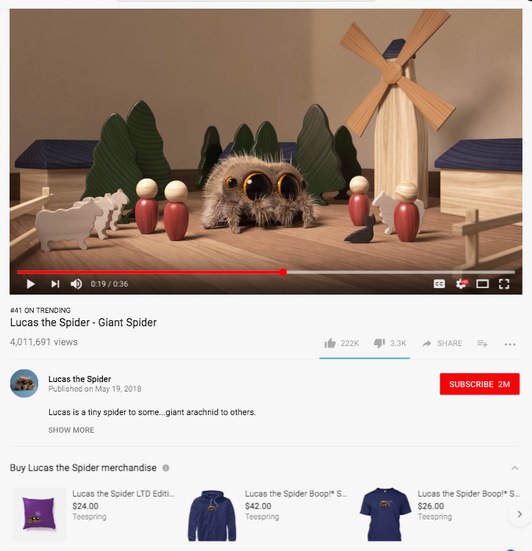
image source: YouTube
Merchandising won’t be a perfect match or the next step for every YouTube content creators, but it can become a substantial source of revenue for some.
B2B selling: How to close sales deals with value selling
If you’re in B2B selling and wish to close sales deals, you need to understand how to sell on value, not on price.
Value selling is certainly not a new concept but implementing it as a sales methodology is still a challenge for companies and organisations that sell their products or services to other companies.
What value selling is NOT
Before discovering what value selling is, let’s see what value selling is not.
Tom Reilly says that value selling is challenging, but not impossible. Discounters shops and powerful chain stores have transformed the word value to a euphemism for cheap.
What value selling is not according to Tom Reilly:
- Value is not bloated, feature-rich products;
- Value is not layers of services that a company offers;
- Value is not a cheap price.
What IS value selling?
In order to increase sales, Brian Tracy, the Sales Guru encourages sales professionals to show their prospects that the value of their products is greater than their asking price.
Selling value instead of selling based on price is also a great method to acquire high-quality customers that are less likely to dump your company the second a better deal presents itself.
Sales professionals should help their prospects overcome two obstacles: fear of change and fear of being cheated. The best way of achieving this goal is by showing their prospects why their products cost what they do and how their products will be a positive change in customer’s life.
Value selling says that customers buy your value or service because they anticipate enjoying a value that they would not have in the absence of your product or service. People don’t buy products, they buy the results the product will give them.
Brian Tracy
Sales experts have defined value selling as follows:
- An outcome;
- The result of your solution;
- Return on investment;
- The impact of your solution on the customer’s world.
Value vs. Price
If sales professionals want to be successful, they must change their perspective on price and see it as part of the product, as one of product’s features – like size, colour, packaging etc.
Why allow yourself to have a sale derailed over a product feature when the real issue is value?
Tom Reilly
If value selling is an outcome, price affects it no more or less than any other product feature. The value of something is determined by what customers sacrifice measured against the outcome of the solution. Sacrifice includes price and ownership costs. Outcome includes what the solution does and how it affects the customer. If the outcome of the decision is greater than the sacrifice, it is great value. If the sacrifice is greater than the outcome, it is lousy value.
Price is a piece of the sacrifice, not the whole of it. At the heart of buying decisions, customers want great value, not just cheap prices.
Tom Reilly
Grant Cardone, international sales training expert and speaker at Brand Minds 2019 notes the following:
using price as your tool is an indication that you need to get back to developing what makes your company a unique proposition.
So if your sales strategy is to rely on your price, you should know that this strategy wouldn’t close the deal. Why? Because there is always a cheaper product or service on the market. Grant Cardone recommends that you spend time determining where you can deliver value that is greater than the price.
Remember, price is a myth. While the buyer may shop the lowest price, it is value that they really want, even during tough economic times. People buy products and services that solve problems. {.} When value exceeds price, price is no longer the issue.
Grant Cardone
Feature selling – Benefit selling – Value selling
To further understand value selling for B2B companies, you need to compare it with two other selling methodologies: feature selling and benefit selling.
Feature selling-Benefit selling
Feature selling means selling a product by describing a physical feature that might appeal to the customer.
Selling a product by its benefits is tied to the feature selling. The salesperson starts by talking about the features of the product and then takes it a step further and shows the customer how this particular feature improves his condition.
Here is a great example:
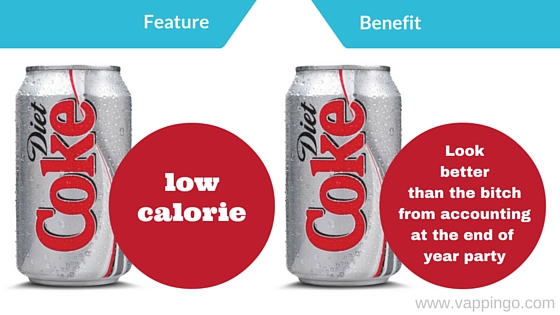
Value selling for B2B companies
Emotional triggering may work for a B2C selling strategy, but when you are in front of the purchasing manager of a prospect company, you are not selling the result of being more beautiful or skinnier.
The purchasing manager is meeting with you because his job is to seek reliable vendors or suppliers to provide products or services that will help his company achieve its business objectives. Your job as a salesman is to help him understand how your product supports his company achieve that. Value selling is the best sales methodology to help you close the deal.
Let’s take the following example:
You have to sell your company’s CRM software system to a communication company.
You start by describing your product’s features and benefits then you deliver your most important piece of information:
In the past year, your company acquired $1 million worth of customer surveys. Because our CRM software has a powerful survey-focused feature, buying it would mean a $1 million cost reduction for your company. How would you use this money?
In other words:
In B2B is not about ”Show me your smile!”. It is about ”Show me the money” and ”Show me the smile of my clients!”
That means you have to be able to mathematically demonstrate two things:
1. How your product will increase your client’s profitability by increasing his income or decreasing his costs,
and
2. How the clients of your client will be happier if he uses your product in his business model.
Bogdan Comanescu, sales expert
Conclusion
Know your product’s features.
Know your product’s benefits.
Know your customer’s business very well.
Know the financial impact your product has on your customer’s business.
How to make it work for your brand with Facebook’s new changes
After the new Facebook News Feed changes, all of the marcomm industry has been left wondering what are the best ways of keep on bringing success for the brands and the companies.
We are offering you some solutions that we believe will help you and your business:
Put more emphasize on the content and its value. Even you will post less frequently, try and create content that will stimulate the conversation, bringing more comments and shares.
Avoid click and engagement bait
Use Facebook Live. Live videos get the best interaction of Facebook of all the content posted and,moreover, bring instant interaction and reaction from the followers. A manner to attract more people to your live video is to announce your followers you will have a video session and when it will happen, plus add people in your video and invite people to watch. Moreover, the viewers can interact by posing open questions or by submitting questions during the live feed.
Use the “See First” option. What it happens is that when your followers activate this option they’re less likely to miss your updates. All they have to do is click on “Following” and then “See First” on your page and everything is settled.
Get into Messenger Chatbots, learn about them and use them. They will allow you to nurture leads and sell.
“Businesses in the travel, finance, media and entertainment, health, and retail sectors in particular have all found success with these pocket-sized personal assistants. For example, you can open up Facebook Messenger at breakfast and ask your weather bot what Mother Nature has in store for you that day. Then you can ask your favorite newspaper bot for the latest sports or business headlines. Planning a trip? Message a travel bot for flights and hotel recommendations, to rent a car, and more. Bots use AI technology to understand your question, find the right response, and deliver it in as conversational and “human” a way as possible,” wrote Rob Mathison for Hootsuite.
Learn how to use to perfection Facebook ads. Even the advertising politics are in a continuous change, mastering your ads’ strategy is the way to reach the best your target.
12 tips on making the customers buy more in online
The e-commerce industry is probably one of the most competitive at this moment, globally. Therefore, having a successful online shop is not an easy task at all, let alone always growing your business and your customers’ base. There are, although, some steps that, if followed, can really help you achieve your goal.
- Context MattersYour call to action has to fit in with the rest of the copy you have on the page. In this case, put a shopping-cart-related call to action on a page that talks up the product you’ve created or in an article talking about how your product solves a particular problem. It would not go well in an opinion piece about news within your niche.
- Keep it Simple
Your consumer need to find the right information fast. Don’t overcrowd the message by having a heavy environment or many information popping out. It’s important to make the consumer journey as fast and easy as possible. Nothing forced, just flowing. Guide him without letting him feel he is guided. The body of your copy is the place to talk up your products or services. The call to action is what convinces consumers to start shopping.
- Product reviews
Sometimes the best advocate for your online shop and product are your customers. Your product descriptions – something we’ll cover late – can only do so much to convince folks to part with their money. Allowing your customers to review products they’ve bought lets them express how they felt about the overall experience and the product itself. Plus it’s the perfect way to get your products validated by a third party. According to Reevoo, quoted by Paymill.com, “reviews produce an average 18% increase in sales, and having 50 or more reviews on a product can increase its conversion by 4.6%”, while MarketingSherpa considers that 58% of consumers prefer sites that offer reviews.
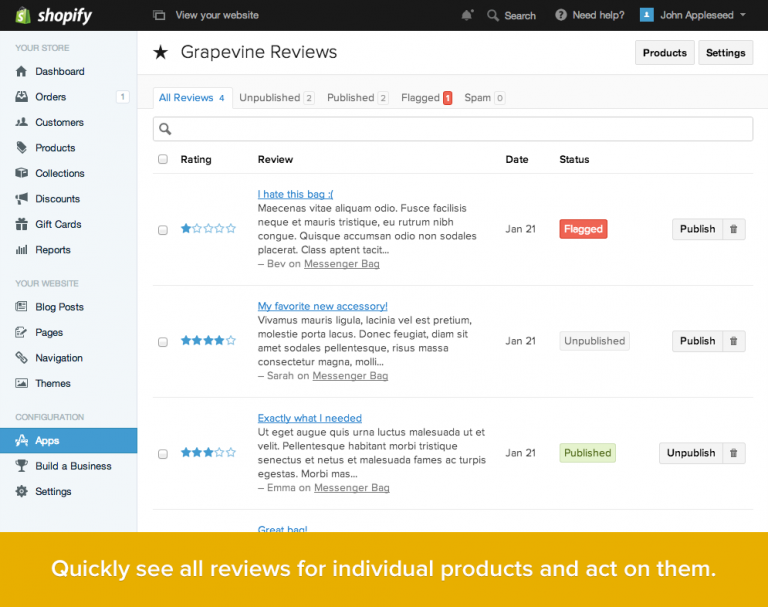
- Placement Matters
Most of the time, a call to action works best when placed at the end of your copy or content. If your particular business makes use of the long-form sales page, putting the call to action higher up is a good idea. You can highlight the benefits of your products and encourage people to buy.
- Make sure you use quality images
Since the technology has evolved so far and one can take a great quality picture, at a high resolution, even with the smartphone there are no more excuses for not using the best pictures possible for your products. You can not only use images to highlight your product’s qualities, but also show it in use to help visitors visualize how the product can be used everyday.
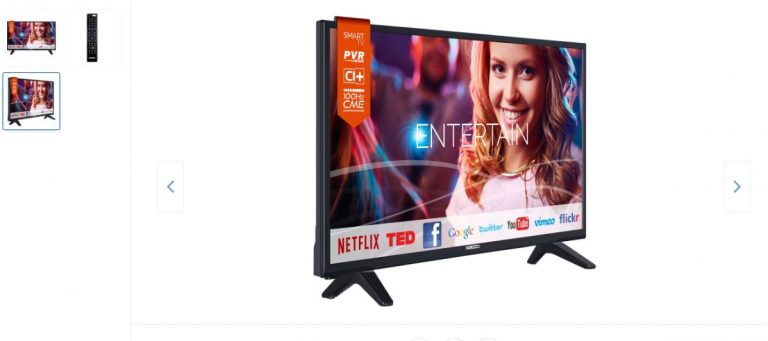
- Great product descriptions
Making it easy for the customers to find the right information and teaching them about the product they are interested in. The writing should be focused on you target and its needs, therefore the tone of voice should be adapted to that. It’s important to focus on the product’s benefits and to keep the language simple, avoiding as much as possible the jargon and write short sentences to help the readability.
- Build Excitement
You need to build up the product or line of products in customers’ minds before asking them to buy. This way, there won’t be any doubt about if they want to take the action you’re calling on them to take. Talk about or show how beneficial what you’re selling can be in the buyer’s life.
- Be Active, Not Passive
“It would be nice if you bought my stuff” is not the same as “Click here to start shopping.” Passive implies that you aren’t sure if you want them to do the thing you’re asking them to do. Active voice removes all doubt about your expectations, shows confidence in your products and brands, which it will bring confidence for the customers as well.
9. Try and have pages as clickable as possible
It helps if you make your call to action an actual clickable link — preferably to your shopping cart (which can say something like “Cart empty! Start shopping here”). This saves the viewer the time of searching for the thing that helps them do what you want them to do. As said earlier, making things easier and comfortable for the shopper only helps your business and your sales.
- Show related products that would look great next to the product they already have in the cart or that would fit perfectly. For example for a photo camera a memory card or different lenses. People tend to buy more this way. It’s an opportunity to increase revenue because it shows items visitors may not have otherwise been looking for and it takes them to pages they may haven’t been interested in entering.
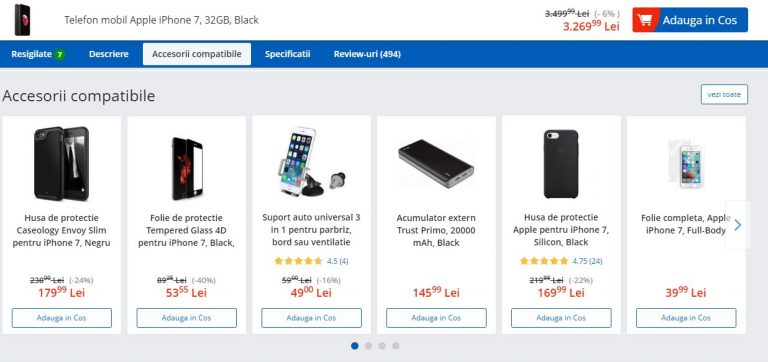
- Easy and safe payment
One of the biggest concerns that people address when it comes to online shopping is the safety of their payment. Make sure you have a trustful provider and that you make the process as easy as possible. Offer them different payment methods, don’t force them to sign up for different offers or newsletters, don’t ask them a bunch of unnecessary information, make sure the checkout page matches the rest of the store. Those would be just some easy, but really important pieces of advice.
- Test, Change, Test Again
Having an online store means constant work of improvement. Even if you have constant growth and awards won, there is always something you can improve. Therefore, test and keep on always testing your website. After all, the final goal is to always keep the costumer happy and wanting to come back and bring more friends along.
